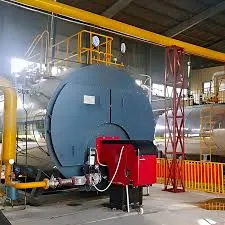
Aug . 30, 2024 14:03 Back to list
Hot Water Boiler Water Pressure | Optimal Efficiency & Safety
Understanding Hot Water Boiler Water Pressure
Hot water boilers are essential components of many heating systems, providing comfort and warmth to homes and businesses. A critical aspect of maintaining these systems is managing water pressure. Proper water pressure in a hot water boiler is vital for efficient operation, energy savings, and overall system longevity.
What is Water Pressure in a Boiler?
Water pressure in a hot water boiler refers to the force exerted by the water within the system. This pressure is primarily measured in pounds per square inch (PSI) and is crucial for ensuring that water circulates effectively through the system. Typically, the pressure in a residential hot water boiler should be maintained between 12 and 15 PSI when the system is cold and could rise to around 20 to 30 PSI when heated.
Importance of Maintaining Proper Water Pressure
Maintaining the correct water pressure is essential for several reasons. First, if the pressure is too low, the boiler may not operate efficiently. Low pressure can lead to insufficient hot water supply and heating capabilities, leaving spaces cold and uncomfortable. Additionally, low pressure can cause the boiler to turn off or fail to ignite, leading to unexpected cold spells.
Conversely, excessively high water pressure can also be detrimental. High pressure increases the risk of leaks, bursts in pipes, and water heater failures. Over time, the structural integrity of the boiler can be compromised, leading to costly repairs or replacements. Furthermore, high-pressure levels can trigger safety valves to open, causing water to escape and potentially leading to water damage.
hot water boiler water pressure

How to Monitor and Adjust Water Pressure
Regular monitoring of water pressure is crucial in maintaining boiler health. Most boilers come equipped with a pressure gauge that displays the current PSI. Owners should check this gauge periodically, especially during seasonal changes when heating requirements might increase or decrease.
If adjustments are necessary, the first step is to identify whether the pressure is too low or too high.
- To Increase Pressure If the pressure is too low, you can add water to the system. Locate the filling loop on your boiler, which is usually a flexible hose connected to the water supply. Open the valves to allow water into the system until it reaches the desired pressure level. Always ensure that you do not exceed the manufacturer’s recommended limits.
- To Decrease Pressure If the pressure is too high, you can bleed radiators to release some of the water. Locate the bleed valve on the radiator and use a radiator key to release air and water until the pressure drops to a safe range. Additionally, you may also need to check for and fix any leaks in the system.
Conclusion
Managing water pressure in a hot water boiler is a fundamental aspect of ensuring the efficiency and longevity of your heating system. Proper maintenance, including regular monitoring and timely adjustments, can prevent potential problems and ensure consistent heating. Homeowners should familiarize themselves with their system, understand the importance of water pressure, and take proactive steps to maintain it for optimal performance. Investing the time in these practices is a crucial step in fostering a comfortable and warm living environment.
-
High-Efficiency Commercial Oil Fired Steam Boiler for Industry
NewsJul.30,2025
-
High-Efficiency Biomass Fired Thermal Oil Boiler Solutions
NewsJul.30,2025
-
High Efficiency Gas Fired Thermal Oil Boiler for Industrial Heating
NewsJul.29,2025
-
High-Efficiency Gas Fired Hot Water Boiler for Sale – Reliable & Affordable
NewsJul.29,2025
-
High Efficiency Biomass Fired Hot Water Boiler for Industrial and Commercial Use
NewsJul.29,2025
-
High-Efficiency Biomass Fired Hot Water Boiler for Industrial Use
NewsJul.28,2025
Related PRODUCTS






















